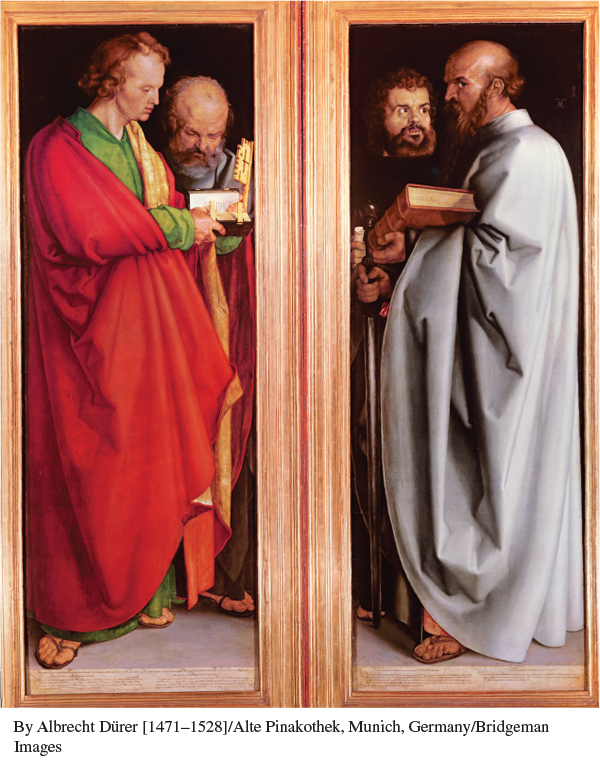A History of Western Society: Printed Page 398
A History of Western Society, Value Edition: Printed Page 381
A History of Western Society, Concise Edition: Printed Page 398
The Appeal of Protestant Ideas
Pulpits and printing presses spread the Protestant message all over Germany, and by the middle of the sixteenth century people of all social classes had rejected Catholic teachings and had become Protestant. What was the immense appeal of Luther’s religious ideas and those of other Protestants?
Educated people and many humanists were much attracted by Luther’s teachings. He advocated a simpler personal religion based on faith, a return to the spirit of the early church, the centrality of the Scriptures in the liturgy and in Christian life, and the abolition of elaborate ceremonies — precisely the reforms the Christian humanists had been calling for. The Protestant insistence that everyone should read and reflect on the Scriptures attracted literate and thoughtful city residents. This included many priests and monks who left the Catholic Church to become clergy in the new Protestant churches. In addition, townspeople who envied the church’s wealth and resented paying for it were attracted by the notion that the clergy should also pay taxes and should not have special legal privileges. After Zurich became Protestant, the city council taxed the clergy and placed them under the jurisdiction of civil courts.

Scholars in many disciplines have attributed Luther’s fame and success to the invention of the printing press, which rapidly reproduced and made known his ideas. Many printed works included woodcuts and other illustrations, so that even those who could not read could grasp the main ideas. (See “Living in the Past: Uses of Art in the Reformation.”) Equally important was Luther’s incredible skill with language, as seen in his two catechisms (compendiums of basic religious knowledge) and in hymns that he wrote for congregations to sing. Luther’s linguistic skill, together with his translation of the New Testament into German in 1523, led to the acceptance of his dialect of German as the standard written version of the German language.
Both Luther and Zwingli recognized that for reforms to be permanent, political authorities as well as concerned individuals and religious leaders would have to accept them. Zwingli worked closely with the city council of Zurich, and city councils themselves took the lead in other cities and towns of Switzerland and south Germany. They appointed pastors who they knew had accepted Protestant ideas, required them to swear an oath of loyalty to the council, and oversaw their preaching and teaching.
Luther lived in a territory ruled by a noble — the elector of Saxony — and he also worked closely with political authorities, viewing them as fully justified in asserting control over the church in their territories. Indeed, he demanded that German rulers reform the papacy and its institutions, and he instructed all Christians to obey their secular rulers, whom he saw as divinely ordained to maintain order. Individuals may have been convinced of the truth of Protestant teachings by hearing sermons, listening to hymns, or reading pamphlets, but a territory became Protestant when its ruler, whether a noble or a city council, brought in a reformer or two to re-